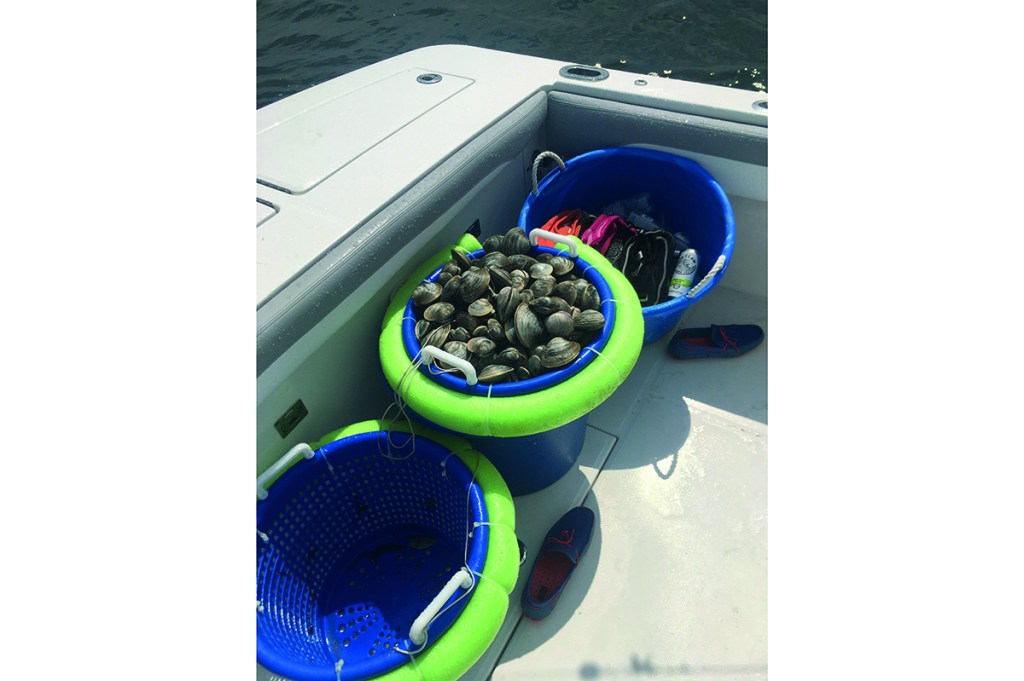When you find one, you’re sure to find more. No, not roaches. Clams.
In shallow, sometimes reedy bay water, you walk like a duck through a mud and sand mixture until you feel something hard underfoot. It could be a rock or it could be a root. But if God wills it, it will be a clam. You dig down, sometimes six inches into the muck. If, at bottom, there appears a hardshell clam (M. mercenaria) — with a white-gray-beige shell striated and sometimes mottled — then chances are there are more about. Many more.
This past Fourth of July a team of us set out in three boats from the top of New Jersey’s Barnegat Bay. The first spot proved a bust, yielding fewer than 10 clams among more than a dozen clammers. We upped anchor and spun around to another site. Pulling the boats (two Regulators and a Sailfish, since you asked) into the shallowest water possible, about four feet deep, we dropped anchor again and waded out. Our bear-leader found one. And then many. Soon, you couldn’t walk a foot without hitting another. We were in a ‘honey hole’. An hour and half later we’d collected two buckets of clams of various sizes, though we wouldn’t know the final count till back on shore.
The littlest ones are called ‘countnecks’, but they’re hard to find. ‘Littlenecks’ are more common, good for popping as an hors d’oeuvre — just throw the clamshell on the grill and wait till it opens, and then it’s ready to eat. They’re deliciously briny; a squeeze of lemon juice and maybe a dash of hot sauce completes them. After the littlenecks are ‘topnecks’ and ‘cherrystones’, the size difference of which remains obscure to me. Finally, the largest are the famed Quahogs, derived from an old Indian word; the tribes used the shells as wampum.
Quahogs are also known as ‘chowder clams’, for the obvious reason. They’re so big, often the size of a human palm, that they work best cooked down in soups or otherwise chopped in various preparations. Clam dip is an old-school crowd-pleaser, but best of all is clam pie — a white pizza with lashings of garlic made famous by Frank Pepe’s of New Haven. Though your pizza-making skills might be less than Pepe’s, using the freshest clams, just an hour out of the water, gives you a leg up.
Some prefer to use a rake to dig up clams. But who wants to carry a rake 500 yards? Far better to dig down with the fingers God gave you. And while some swear that only while barefoot can you properly detect clams, connoisseurs know that’s bosh. Wearing a pair of athletic socks means you can’t feel the crabs nipping at your toes, an advantage not to be dismissed. And you can still feel the clams. We pulled in 375 in total.
This article is in The Spectator’s September 2020 US edition.

























